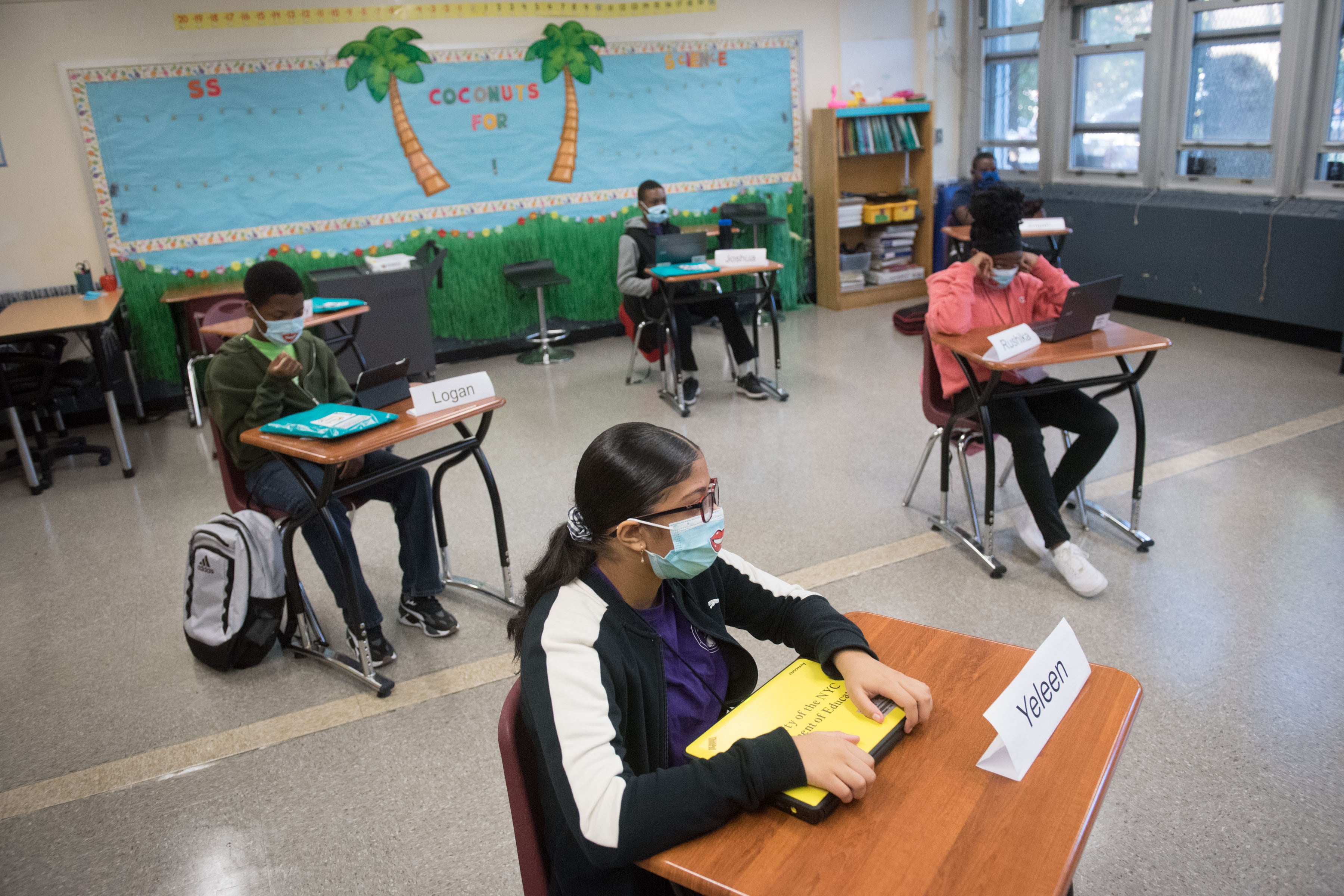The balance of students learning full time from home has shifted: There are more New York City students learning from home full-time than those opting for a mix of in-person and online learning, new data show.
Some 52% of public school students, excluding those who attend charters, have signed up to learn online-only as of Oct. 9, according to education department figures released Tuesday. Those students will have the option to revert to their school’s hybrid model, offering on average one to three days a week of in-person learning, on a quarterly basis this school year.
The education department says that the remaining 48% of the city’s approximately 1 million public school students are participating in blended learning. But it remains unknown how many children are showing up to school or how often the virtual-only students are logging on. Anecdotally, educators across the city have reported that a chunk of their students are absent for their scheduled in-person learning.
City officials have not released attendance figures so far — information that, in typical years, is available daily online. Mayor Bill de Blasio and Chancellor Richard Carranza have blamed the delay on the complications of counting attendance in both in-person and virtual settings. They have declined to say when these numbers will be released publicly.
“It’s a much more complicated reality,” de Blasio told reporters on Oct. 1. “We want to get these numbers right. It’s going to take more time than usual.”
Over the summer, de Blasio, citing a districtwide survey, touted that three-quarters of families wanted to return to school buildings. That survey, which represented about 300,000 families and nearly 118,000 students, showed that 72% of families and 73% of students ranked their first choice as returning to school on certain days or every other week. But just 28% of families and one quarter of students said they were “very comfortable” with in-person learning even if health and safety measures are followed.
Families steadily opted for remote learning this past summer. During those chaotic months before schools reopened, the city twice delayed the reopening of buildings, faced pressure from the teachers union to make staffing and safety adjustments to the reopening plan, has struggled to staff different modes of learning, and earned a no-confidence vote from the union that represents city principals and administrators.
As the numbers have shifted, principals have been tasked with figuring out complicated logistics, such as finding enough teachers for multiple groups of students on a given day — hybrid students in-person, hybrid students on their remote learning days, and remote-only students. Several high schools, for instance, are having students learn remotely when they are in their school building to simplify staffing issues. Some schools are offering little to no live instruction on the remote days for hybrid students.
Adding to the anxiety and uncertainty, about a week after schools welcomed back all grades, more than 120 schools in Brooklyn and Queens closed down for at least two weeks because of rising coronavirus rates in their immediate and surrounding neighborhoods. Students at those schools who have opted for hybrid learning are not included in the 52% of students learning exclusively from home.
Meanwhile, there are significant differences between racial groups when it comes to learning form home full-time. Forty-three percent of Black students and 41% of white students have so far chosen remote-only learning. By contrast, more than three quarters of Asian children and half of the city’s Hispanic students are remote-only learners.
Even though fewer than half of students are slated to return to school buildings, those estimated 476,000 students would represent the third largest school system in the nation, behind Los Angeles and ahead of Chicago. Many students, like Ashanty Peralta, a Bronx ninth grader at the Urban Assembly School for Applied Math and Science, want to come to school buildings, even if only for one day a week.
“When I’m in school I feel more motivated,” she previously told Chalkbeat.
Amy Zimmer contributed.






